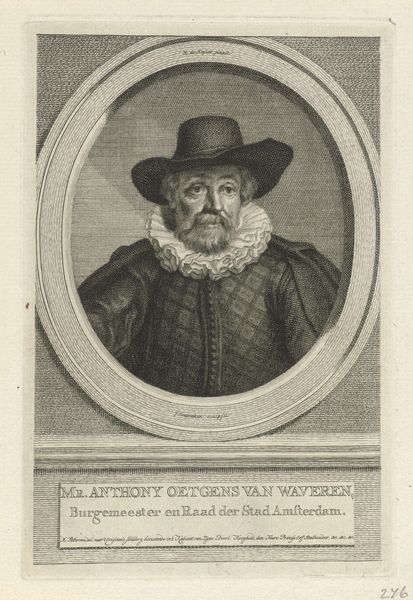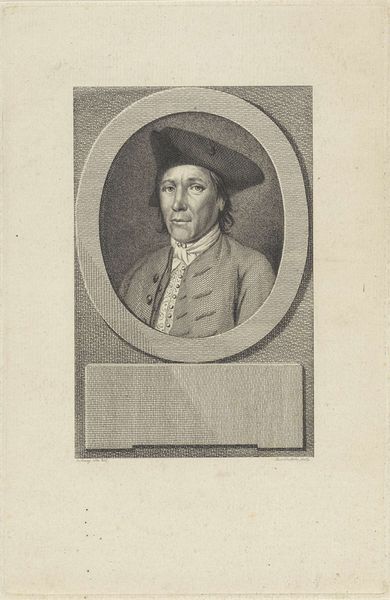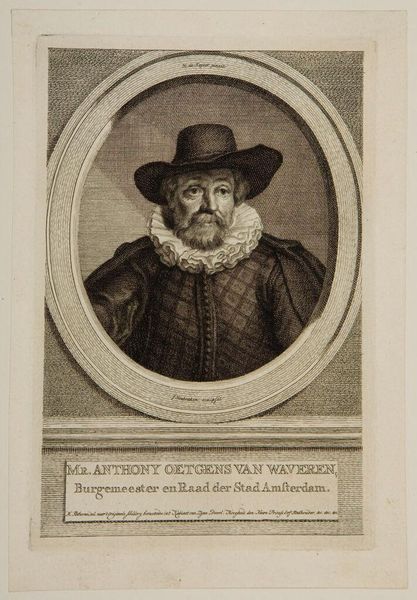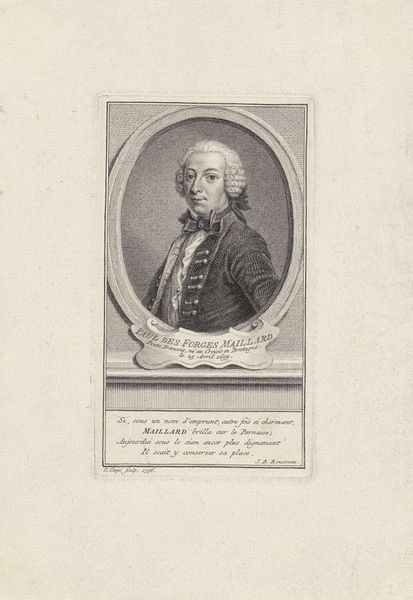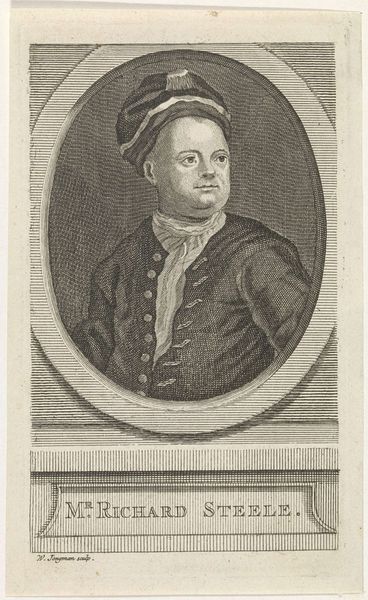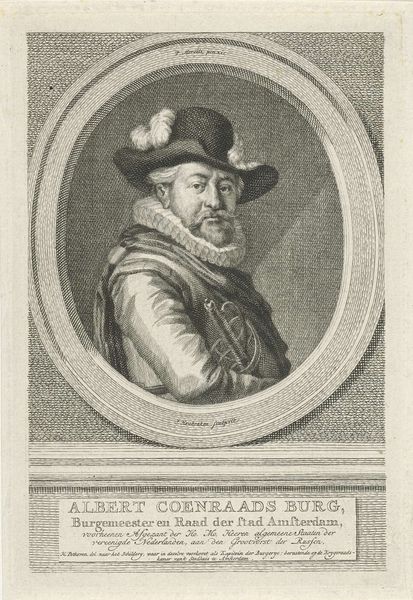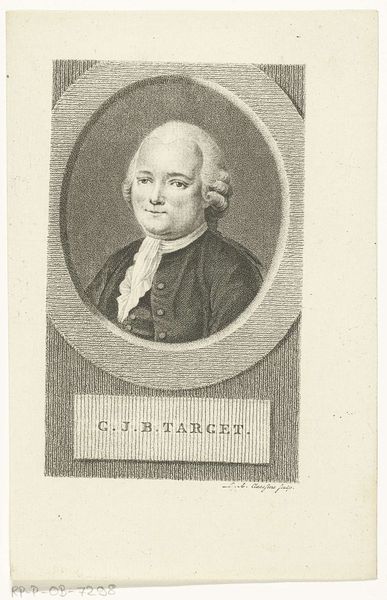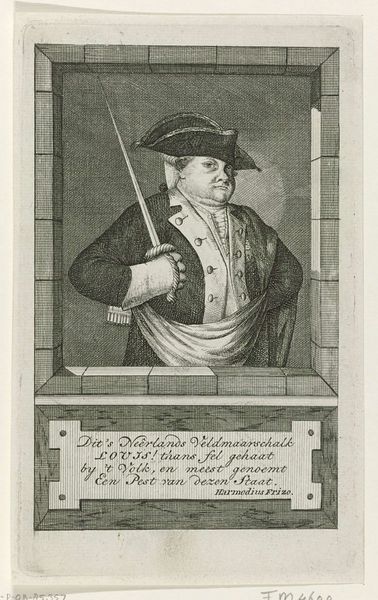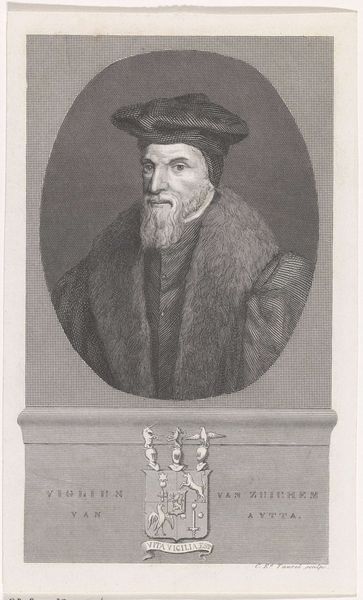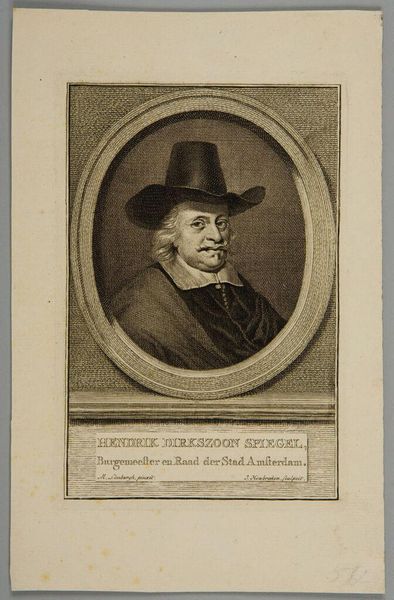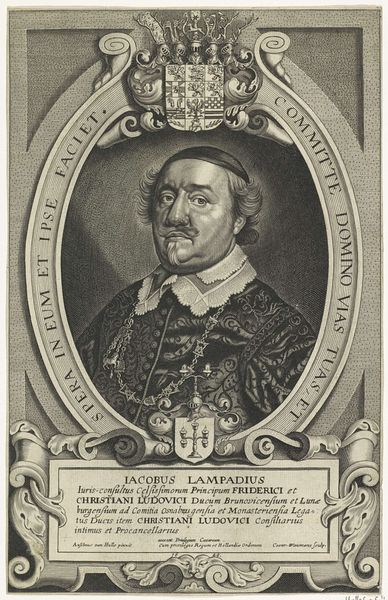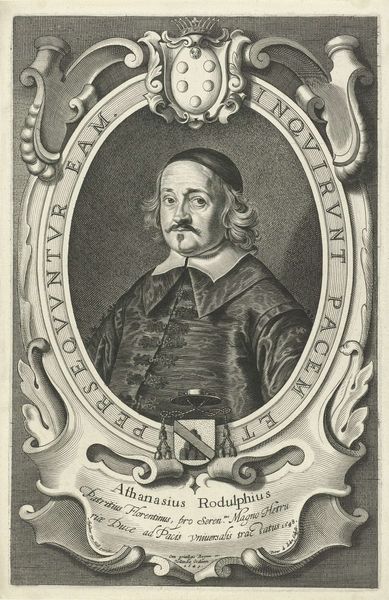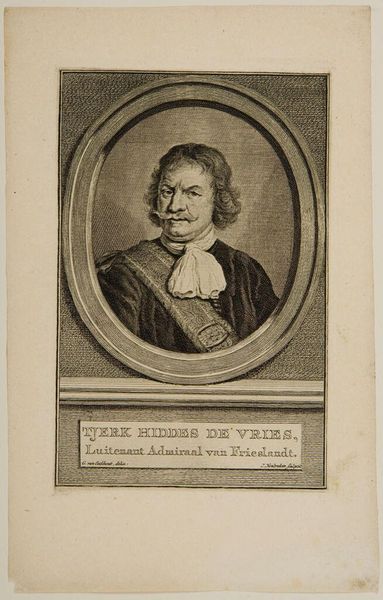
print, engraving
#
portrait
#
self-portrait
# print
#
engraving
Dimensions: height 227 mm, width 167 mm
Copyright: Rijks Museum: Open Domain
Editor: Here we have "Portret van Adriaan Walraven," a print made in 1803 by George Kockers, currently housed in the Rijksmuseum. It has an oval format, framing a man in a tri-corner hat. As a print, its existence feels linked to accessibility; it would’ve circulated. What jumps out to you? Curator: Well, let’s focus on this word "print." Think of the materiality—the paper, the ink, the engraved plate itself. What was the process to create this, and who was involved? It wasn’t just Kockers; there were papermakers, ink producers, distributors… it represents a whole network of labor. Editor: That’s fascinating! I was just looking at the image. So, its cultural value stems from a large number of participants not only Kocker’s skills in engraving, but those surrounding his work? Curator: Precisely! And consider the social context. Prints allowed images, and therefore, ideas, to circulate widely in a way that paintings simply couldn’t. How do you think the relative inexpensiveness impacted society, and why do you suppose he choose Adriaan Walraven as the subject? Was this about elevating this man's legacy or self-representation through distribution? Editor: I guess prints democratized art in a way. If not, perhaps the man funded this work as some way to be remembered... or maybe to be judged! How far could his message reach? It must be very far. Curator: And what kind of labor goes into consuming and interpreting that message? It seems almost radical that it invites a commoner like me or even the King to judge, equally. These objects are charged with so many layers, beyond just the single artistic vision. This lens changes how one understands the whole process of the piece’s life cycle from the point of origin until today! Thank you for your help in shedding some light.
Comments
No comments
Be the first to comment and join the conversation on the ultimate creative platform.
